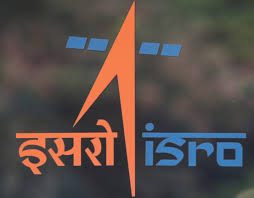
Here We Go: #Exclusive #Thread #Update
With the #Ukraine crisis preventing the use of the preferred AN-124 aircraft, India's #GSAT24 has been shipped to French Guiana for its June 22 launch on @IAF_MCC Globemaster (C-17) aircraft (see pic). 1/n
With the #Ukraine crisis preventing the use of the preferred AN-124 aircraft, India's #GSAT24 has been shipped to French Guiana for its June 22 launch on @IAF_MCC Globemaster (C-17) aircraft (see pic). 1/n
https://twitter.com/Chethan_Dash/status/1527210386747170821

Most satellites around the world are transported using the AN-124 aircraft which offers loading and unloading options most suitable for sensitive equipment/systems that satellites are made of (see representative pic)… 2/n 

…And, as per sources in @NSIL_India, which is launching #GSAT24 as a dedicated satellite for Tata Play’s (formerly TataSky) DTH services, the initial plan was to ship the satellite using an AN-124. 3/n
“Given the geopolitical situation, availability of An-124 was difficult so we decided to use the C-17. However, we’ve had to use two: The first with the satellite and some ground support equipment and the second one carrying other ground support equipment,” an official said. 4/n
The first C-17 Globmaster took off from the @HALHQBLR airport in the wee hours of Thursday, while the second one left a few hours thereafter. 5/n
The GSAT-24 is NSIL’s first dedicated commercial satellite launch mission that is scheduled for June 22 from French Guiana. NSIL is launching the satellite using the services of French firm Arianespace, which will employ its heavy-lift rocket Ariane-5. 6/n
#GSAT24 is a Ku-band 4-tonne class comms sat built by @isro for @NSIL_India. It’ll provide high-quality TV, telecom & broadcasting services over India. It is, as first reported by me, dedicated for Tata Play and the 1st demand driven comm sat mission undertaken by NSIL. 7/n
As part of space reforms announced by GoI, @NSIL_India is mandated to undertake operational sat missions on ‘demand driven’ model, wherein it is responsible for building/procuring, launching, owning and operating the sat besides providing services to its committed customer. 8/n
In line with this, #GSAT24 will be fully funded, owned and operated by NSIL on a commercial basis. Earlier, firms would get annual leases to utilise satellite capacity. In this case, Tata Play would have the transponders for a much longer time. 9/n
As reported earlier by me, Arianespace’s Jun 22 Ariane-5 mission will launch sats for 2 of its major customers — MEASAT (Malaysian satellite operator), and India’s #GSAT24. For MEASAT, it will launch MEASAT-3d , a multi-mission telecom sat built by Airbus Defence & Space. 10/n
The Ariane-5 heavy-lift launcher is an European Space Agency (ESA) programme carried out in co-operation between public institutions and industry. n/n
• • •
Missing some Tweet in this thread? You can try to
force a refresh











